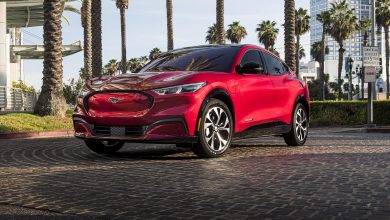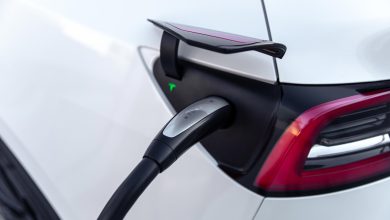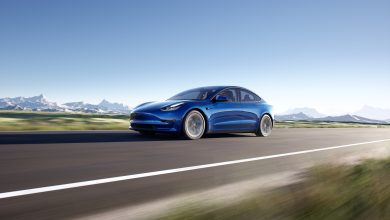United States Postal Service To Transform Fleet To Electric Vehicle By 2028
EV NewsA total of $3B will be spent on the fleet

The United States Postal Service (USPS) has finally bowed to public pressure from environmental activists. On Tuesday, December 20, 2022, the agency announced that it plans to spend $9.6 billion to procure a minimum of 66,000 electric vehicles in a push to make its delivery fleet environmentally friendly.
About a third of the total money ($3 billion) earmarked by the USPS for the project will come from congressional funding allocated under the Inflation Reduction Act (IRA). With the funding, the Postal Service is en route to building what might be the largest EV fleet in the country.
“The $3 billion provided by Congress has significantly reduced the risk associated with accelerating the implementation of a nationwide infrastructure necessary to electrify our delivery fleet,” Postmaster General Louis DeJoy said.
USPS plans to purchase 106,000 vehicles for its delivery service between 2022 and 2028. EVs make up more than half of that entire number. The new vehicles will gradually phase out the agency’s aging fleet of about 220,000 vehicles as explained in the press release from the Postal Service.
Reacting to the development, DeJoy said, “We have a statutory requirement to deliver mail and packages to 163 million addresses six days per week. As I said in the past, if we can achieve that objective in a more environmentally responsible way, we will do so.”
The Postal Service has had to deal with lawsuits in recent times. In April, the USPS was dragged to court by environmental groups for what they termed the failure of the delivery service to conduct a thorough environmental analysis as it plans to swap its old fleet with new mail trucks that consume more fuel.
One of the groups that have been pushing for the electrification of the USPS fleet was the Sierra Club. Reacting to USPS’ Tuesday press release, the director of the Sierra Club’s Clean Transportation for All campaign, Katherine García said, “Communities across the United States can get the respite of cleaner air when receiving their daily mail packages.”
USPS’ transition is driven by operational suitability and financial ability
For many years, the USPS has consistently delivered mail to millions of Americans under extreme temperatures. However, that has taken a toll on its trucks. The Postal Service has over 220,000 vehicles which account for about one-third of the entire vehicles in the United States government fleet, and also the largest in the world.
Some of the vehicles in its fleet are also the oldest in the country. For example, the production of its signature Grumman LLV workhouse stopped in 1994. Nevertheless, it continues to complete scheduled rounds across the country.
The problem with the aging trucks is that some of their engines are gas-guzzlers. For example, the Grumman LLV can only get 10 miles per gallon and lacks air conditioning. This poses a serious threat to letter carriers since severe heat is a serious challenge on mail routes. In the past, some postal workers have lost their lives to heat waves.
Since the world is fighting climate change and rising average temperatures, 10 miles per gallon is poor. However, for a long time, the postal service was unable to do anything about it due to financial constraints.
Since the agency is not funded through taxes, it has to cover some of the cost of its operation by selling its services. A 2006 Congress requirement for the USPS to prepay health benefits for the agency’s retired employees compounded their woes and ate into its operating budget. That law was repealed in early 2022. Instead, Congress sought to reform the finances of the USPS.
Earlier in 2022, the USPS announced that it was going to purchase new trucks. However, at that time, only 10% was planned to be electric. Consequently, 16 states and environmental activists filed a lawsuit against the agency in an attempt to block the purchase. By summer, the USPS increased the quota of new EVs in the purchase to 40%—but has now surpassed that with the new announcement.
The new EVs will not be ordered from one manufacturer
Delivery fleets rarely stick to one manufacturer when making bulk vehicle purchases and USPS is upholding that norm. The new EVs will be a blend of different manufacturers and diverse platforms. An estimated 21,000 of the new EV purchases will be trucks and vans which are already commercialized by Ford.
However, the bulk of the purchase will be what the USPS called the Next Generation Delivery Vehicle (NGDV). The trucks will be made by Oshkosh Defense—a military contractor that also produces MRAPs. The ducklike 4-ton truck will come with air conditioning, a walk-in cargo area, and a broad windshield.
The Postal Service will add at least 60,000 NGDVs to its fleet. About 45,000 of them will be all-electric. DeJoy mentioned that the new EVs will help the agency to cut down its cost.
“Every dollar I spend, I burn carbon. So every dollar that I save actually reduces carbon,” said DeJoy to reporters on Tuesday.
How the electrification of the delivery fleet will possibly impact the environment and economy
While the focus of EVs has been on passenger cars, the electrification of fleets can have a far-reaching effect on the fight against global warming. The reason is that delivery vehicles usually cover more miles per week than passenger vehicles. Therefore, swapping one delivery truck for an EV can have a higher impact on carbon emissions reduction.
Also, since delivery fleets travel on defined routes, it will be easier to create a charging network for their EV fleets. Overall, transitioning a fleet at once will lower the total costs and cause a massive drop in emissions.
Mail trucks can also be used as a case study for further EV study. They start and stop a lot which can also make it possible to implement regenerative braking systems to charge the batteries while they are on the move. DeJoy mentioned that the electrification of USPS can help to optimize workflow and deliver bigger environmental gains.
This he believes can be achieved by making sure trucks depart depots full, thereby limiting the amount of mail that will be airlifted, automating operations, and consolidating facilities. USPS plans to make public a Draft Supplemental EIS in May 2023 that will highlight the potential environmental impact of purchasing gasoline-alternative vehicles.




